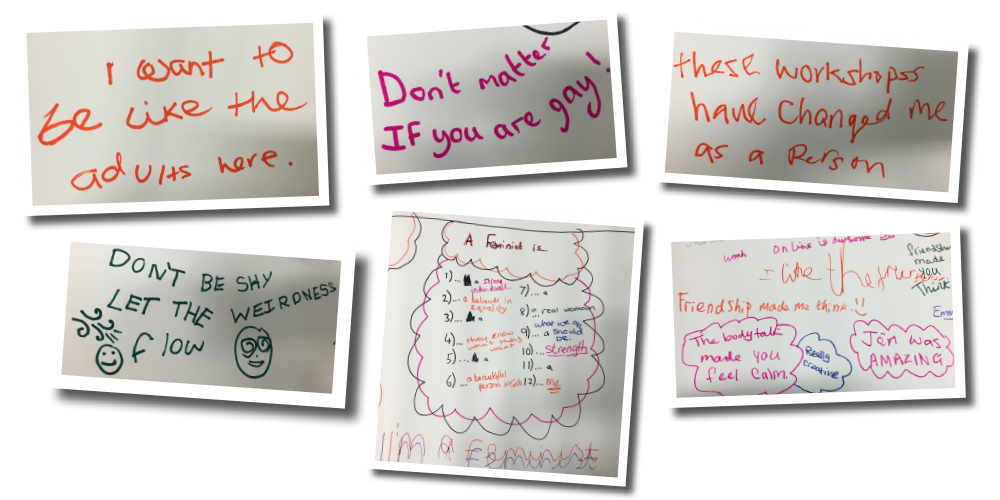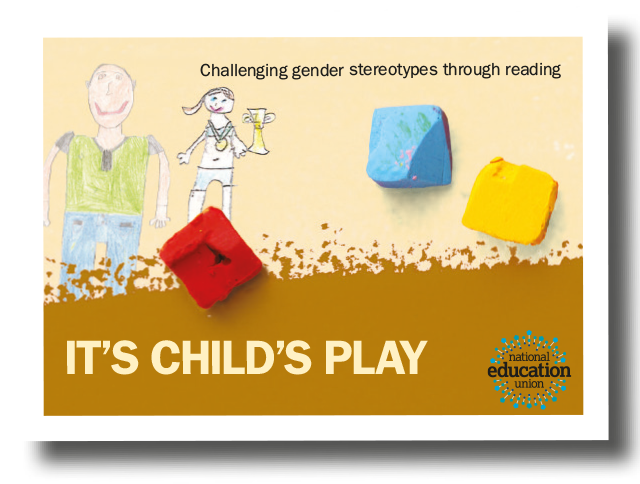KEY MESSAGES FROM THE 'SPEAK OUT' RESEARCH (10-12 year olds)
Children are learning about gender and sexuality as soon as they enter the social world – Children are actively negotiating and learning about the contradictory ways in which sex, gender and sexuality shapes who they are, how they feel in their bodies, what they can do, where they can go, how they relate to others and how others relate to them.
Putting up with everyday sexism – The pressure to conform to gender norms are pervasive in children’s lives, both online and offline.
Boyfriend and girlfriend cultures are prevalent in children’s social worlds, but experienced in diverse ways – Some children feel the pressure to participate in boyfriend-girlfriend cultures in primary school, making boy-girl friendships in school difficult to sustain. Some children pretended they were cousins so they weren’t forced to ‘couple up’.

Young children do experience sexual harassment – Verbal sexual harassment (in school & in public places) was widespread but few children could talk about it with a parent, carer or teacher and were ill equipped to know how to deal with abusive comments.
Many children were angry about having to live in a sexist peer culture and society – While some children found creative ways of managing and/or challenging gender and sexual stereotypes, most children didn’t know what to do or how to change things, even when they wanted to. Individual attempts to combat sexism were either futile or too risky.
Policy and practice needs to be informed by children’s own experiences – Only by developing policies and practices which speak to children’s own gender and sexual cultures can practitioners fully support children’s own understanding and experiences of why they feel the way they do, what it means for the way they act, and how things can change.
Why creative and participatory workshops?
Creative and interactive methods (e.g. drama, visual art, poetry) have the potential to open up spaces to feel, think, question, embody and share often sensitive or difficult personal issues without children and young people revealing too much of themselves. This can be achieved through inviting children and young people to create scenarios that connect to the personal but provide opportunities for collective thought, understanding, debate and action for change.
Read more here.
1: Growing up in a sexist and sexualising culture
This one-day event was informed by the findings of a Welsh research project that explored what pre-teen (age 10-12) children had to say about how gender and sexuality mattered to them.
One of the key findings was how angry children felt about having to live in a sexist and sexualised peer culture and society. Many children said that they wished they could talk more freely about the pressures that they were facing at age 10 and 11 and not just talking or learning about what might happen in the future. This was especially the case in relation to early relationship cultures, body image and safety.
![]()
2: Bridging the silence, challenging age-based assumptions
The day was specifically designed to provide a platform, via a series of creative and participatory workshops, which enabled children to have their say and learn what other children think about gender inequalities and gender stereotypes, including gender-based and sexual bullying, friendships and relationships in school, in communities and online.
An important outcome was to bridge the silence, and challenge some of the age based assumptions between teen and tween worlds, and between student-teacher worlds. It was also a prime opportunity to experiment with co-producing and delivering a personal and social education (PSE) transitions day, with academics, teachers, young people and artists.
![]()
3: Organising the day
All the children from the 6 feeder primary schools interacted with each other through a series of workshops. Some of these were peer-led by the host secondary school’s feminist and anti-homophobia youth groups, and others were run by university students and artists with an interest and expertise in gender equalities and sexualities education. The day began with students from the host secondary school, delivering presentations, poems and a short drama inspired by the key findings from the ‘Girls and Boys Speak Out’ research.
![]()
4: Everybody’s Learning: teachers too!
Very few teachers receive any training on how to address gender in/equalities in school.
While the children participated in their workshops, their primary school teachers participated in a separate inset-style workshop on ‘Challenging Gender Stereotypes in Primary Schools’.
5: Just friends? a peer-led lesson on gendered relationship cultures
Based upon the ‘just good friends’ drama performed in the morning session, children were encouraged to explore the gendered dynamics of mixed and single-sex friendships and the complexity of young relationship cultures.
![]()
6: Camping Out: making gender feel-good shelters in a tent decorating workshop
Children decorated small pop-up tents with words and pictures of ‘when a body worries’ (on the inside of the tent) and ‘when a body feels good’ (on the outside of the tent) using sticky notes. They then explored ways of addressing body image stereotypes.
![]()
7: Body Talk: moving through stereotypes
This workshop invited children to explore how the body communicates through movement in everyday routines. Based around the theme, “in their shoes”, children (in small groups) had the opportunity to experiment with peer pressure in peer cultures. They incorporated ‘gendered’ objects (e.g. heeled shoes, scarves, lipsticks, combs, mirrors, baseball caps) into their movement piece.
![]()
8: Crushing corporate gender stereotypes: a lego workshop
Children mind-mapped all the ways in which the media creates and challenges gender stereotypes. They then made their own ‘gender stereotype smashing machines’ with lego and post-its.


Wall Of Thoughts
Young people had the chance to comment on what they were doing and learning throughout the day by populating the ‘Wall of Thoughts’.
Policing each other
Two children took it upon themselves to scribble out one anti-gay comment, stating “don’t be homophobic”. A couple of hours later, a “sorry” appeared next to the original comments.
Sharing knowledge
At the end of the day students were reunited with their teachers and shared their creations, including their “Wall of Thoughts” of what they would like to change.


Loosening the gender straight jacket for children in Sweden: 'Hen' is a gender neutral pronoun

Breaking the mould: challenging gender stereotypes



![]()









